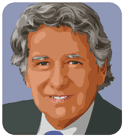Like so many around the world, Canadians witnessed the coverage before, during and after the Grand Jury verdict in Ferguson, Missouri regarding the shooting death of a young African-American teenager by a white police officer. To the outside observer, there was no middle ground—either police officer Darren Wilson should be indicted for the death of the young African-American victim Michael Brown, or he should not. The Grand Jury decided against an indictment.
The reaction was immediate and impassioned. Demonstrations, some accompanied by rioting, looting and destruction of property, followed. More fallout is expected in the days ahead. Even in Canada, there were demonstration in Montreal and Toronto opposing the verdict of no indictment.
The narrative of Ferguson, however, went beyond the jury outcome. The question of racism in America, excessive police force in communities of color, and the overriding issues of poverty within these communities dominated news analyses and debates. Unwarranted police behavior—including excessive force and poor judgment—in addition to the effects of poverty within communities, however, does not stop at the borders of Missouri. Just as the United States was bracing itself for the Ferguson judgment, Tamir Rice—a 12-year old African-American boy in Cleveland, Ohio—was gunned down by a white police officer after he was seen holding a toy gun. The independent news organization ProPublica estimates that young African-American males are 21 times more likely of being shot dead by a police officer than young white males. Being young and black in America often means being more frequently unemployed, poorer, more susceptible to becoming a victim of crime, and more vulnerable to excessive force from white police officers.
As Canadians observing the post-Ferguson events, we must be careful not to make simplistic judgements about our neighbors to the south. The Ferguson police force—which is unrepresentative of the town’s demographics—will likely continue to experience tension and confrontations with the predominantly black population. The story in Ferguson seems all too typical of similar communities: whites move out, blacks move in, but the power structure often remains the same. The white police authorities patrolling the community often stop poorer black citizens for minor infractions, resulting in bitterness, discrimination, charges of racism, and confrontations.
The election of U.S. President Barack Obama, the first African-American president, was supposed to usher in a new era of race relations. It has not happened, and it was simplistic and unrealistic to think it would. On the night of the Grand Jury verdict, Obama spoke of progress since the Civil Rights legislation of the 1960s and the capacity of America to change. But events in Ferguson clearly illustrate that more progress and greater change are needed. This goes beyond the politics of the day and the Obama presidency.
Also at stake is how societies both within the United States and elsewhere accommodate diversity. While we may have different realities and roots, the challenge lies in how we live together in peace and harmony. In this regard, police and politicians have the greater burden of responsibility in taking diversity into account within communities.
They must make the dialogue with community leaders more than an exchange of words. There has to be a real effort to understand how minorities feel and experience their reality, produce needed corrective actions, and work to build the trust required to avoid another Ferguson.
The United States, as usual, is being closely observed as the world’s media descend on cities such as Ferguson and Cleveland. However, Ferguson may not be just America’s problem. As demographics change in the developed world, as poverty subsists in developed societies, and as police authorities have serious inconsistencies in their ways of operating, Ferguson—and what it has come to represent—will have an impact that goes far beyond a suburb of St. Louis.





